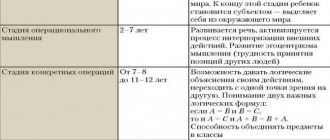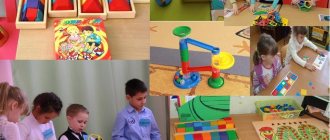Thinking is the highest mental process in human consciousness. Success, the ability to cope with everyday responsibilities, and achieve goals depends on the ability to think.
Thanks to thinking, a person has the opportunity to imagine the hidden side of an object or phenomenon, as well as its changes over time, to strive beyond the limits of existing reality, and to use imagination constructively.
What do we mean by thinking?
Thinking should be understood as the process of cognition and modeling of reality using generalized and indirect conclusions obtained on the basis of human activity. Philosophers of all times have emphasized the process of thinking as a distinctive feature of human nature. According to Descartes, thinking confirms the existence of life within the individual.
In the course of thinking, a thought becomes “tangible”, a concept is born, an idea comes to life. The process of thinking is contrasted with sensation and perception, as lower forms of consciousness, characteristic of the animal world.
Thinking fills human activity with meaning and acts as a support for the development of science and art. Based on this, many results of labor have, in addition to pragmatic, symbolic meaning: for example, the appearance and location of architecture, the material of construction of a building have no less meaning than its direct purpose.
Mental operations, first of all, appeared as practical, and then they were transformed into theoretical ones. Therefore, action is essentially the primary form of thinking. Experience confirms the dependence of the quality of completing a task on the articulation of its formulation.
A distinctive feature of thinking in comparison with other forms of consciousness is the ability to receive information indirectly. The process is carried out using brain functions - deduction and analogy.
Types of thinking
There are several types of thinking. Each of them is associated with a certain level of awareness of reality with varying degrees of abstraction.
Visually effective
Cognition through the manipulation of objects: the implementation of this level of understanding reality does not go far from practice, given that a person seems to “help himself with actions.” The level of thinking is typical for the age of three. To see the differences between objects, the child places them next to each other. The baby understands what a house is when it is built; or that the action was incorrect because the toy was broken. The child learns to generalize and classify, arranging various parts of the construction set together according to color and size.
Such thinking is also characteristic of mature individuals, with the only difference being that it becomes secondary. Visually actionable operations are activated in cases where accurate forecasting is difficult. As an example, studying unfamiliar technology in practice, interior remodeling, etc.
Visual-figurative
Cognition with the help of ideas and objects is a more advanced level of understanding reality in comparison with the previous one. The thought process comes to the fore, followed by actions. To give a detailed description of an object, a person does not need practical actions in connection with it: he does not examine or touch it with his hands. This level can be mastered by a child of about seven years old.
Adults demonstrate this kind of thinking when they visualize the creative process step by step with the accompanying changes, build a strategy for their actions, while simultaneously thinking about the results and adjusting their behavior in accordance with them. The development of visual-figurative thinking allows you to improve creativity and the ability to generate new ideas.
Verbal-logical
Cognition through concepts, reasoning, words. This is the level of abstract thinking processes, characterized by the assignment of concepts, the use of logical constructions that do not always have an image, for example: “conscience”, “value”. Abstract thinking is a person’s auxiliary tool for identifying patterns in the surrounding world and in the material being studied.
Of course, such thinking is not typical for a child, for the reason that his experience has not accumulated a sufficient number of concepts and images. Building a logical relationship is required in solving both everyday and life-changing issues. The speed and correctness of performing basic tasks depends on how developed a person’s verbal and logical thinking is.
Is it possible to develop abstract thinking, how and how long will it take?
How to develop abstract thinking and is it even possible to do this? Yes, you can. Methods exist. However, this is not a quick process. According to various estimates, it will take from several months to a year to achieve high-quality results. It is easiest to develop such abilities in adults. Children don’t have much sense; you need to wait for the final formation of logical abilities and only then start. That is, during the teenage years. Techniques:
- Oral exercises. Reasoning on specific topics with conclusions and others. They also allow you to develop a verbal style of mental activity.
- Solving logical problems. As much as possible. Preferably with a gradual increase in complexity and a clear description of the process of thinking. Guesswork and simple coincidences must be excluded.
- Writing essays on specific topics. Expressing arguments for, against, one’s own position and conclusions on the issue. This allows you to develop not only abstract, but also critical thinking.
Functions and processes
This or that type of thinking activates a list of processes that ensure knowledge of the picture of the world:
- Comparison.
Identification of similar and distinctive properties and qualities; - Analysis.
Consideration of a phenomenon in the light of its details and components; - Synthesis.
The opposite of analysis; with its help the whole can be restored by identifying connections; - Abstraction.
Presentation of a certain quality of an object against a background of less significant ones; - Generalization.
Ignoring individual features in order to comprehend common ones and identify significant connections between objects.
For a child’s level of thinking, all of the listed processes must be reflected in practice: disassembling and folding parts, classifying them according to certain characteristics.
Depending on the functional characteristics, thinking in psychology is divided into reproductive, productive and creative:
1. Reproductive.
It has the form of repeating the studied information according to an established algorithm. In practice, this looks like the ability to solve problems according to the principle of previous ones. The thinking process is concentrated not on mastering new things, but on fixing one or another pattern.
2. Productive.
Thinking in which a person goes beyond existing concepts and supplements his level of understanding with new knowledge. Their novelty is such only for the individual, not counting the “universal” objectivity. If the information received by an individual represents an innovation for all humanity, then we are talking about creative thinking.
3. Creative.
A process characterized by complexity and structure. The individual strives to acquire new knowledge and independently apply it in practice. Characteristic features: uniqueness, creation of something new, not repetition; applying a different point of view to a phenomenon for the purpose of broader consideration; the spontaneity of an idea that was not preceded by anything from the current situation; transformation of the familiar.
Types of thinking
There are different types of thinking, which in turn are divided into categories:
1. Logical - ethical.
Logicians operate with concepts from the position of consistent validity, rules, patterns. Supporters of the second type realize themselves based on their mood, feelings and emotions. The former prefer the exchange of information, representatives of the second type prefer the exchange of emotions.
2. Sensory – intuitive.
People of sensory perception are distinguished by concreteness and practicality of judgments; they handle details well, draw conclusions based on current events, and deftly cope with the situation that has developed in the present time. Representatives of the second type of thinking review the problem in a global sense, reflect on the basis of philosophy, theoretically and without being tied to the specific features of the event.
3. Decisive - judicious.
People of the first type of thinking are characterized by quick decision-making and the ability to work in a tense atmosphere; they can make mistakes and quickly jump to conclusions by changing their behavior. Representatives of the second type think about decisions for a long time, act exclusively in an atmosphere of calm and comfort, avoiding unnecessary fuss.
4. Schizothymic - cyclothymic.
People of the schizothymic type are distinguished by subtle perceptions, self-centeredness, power, and a desire to stand out from others. In their everyday lives, signs of schizophrenia are observed. Cyclothymic people are characterized by irresponsibility, carelessness, sociability, and vividness of emotions. In addition, there may be a tendency to manic-depressive syndrome.
5. «Changer - "runner".
Representatives of the “changer” mindset are focused on a variety of actions, mastering something new; “runners” direct their activities in a single direction until they complete what they started. They are “conservatives” in everyday life; They approach their choice of friends, hobbies, and acquisitions with caution. Sudden changes have a depressing or destructive effect on them.
6. Introvert - extrovert.
Everyone knows the classification: introverts have a mindset that is more inward-looking. They are sensitive, reserved, and thoughtful. Extroverts - actualize the external; they are talkative, open and energetic.
7. Internal - external.
Representatives of the first type are confident that everything that happens in their lives depends on themselves and changes under their influence. They “take all failures upon themselves”, and consider successes as honorable achievements. Externalists are convinced that everything that happens is due to the surrounding reality, other people, random coincidences, “fate” and so on.
8. Positivism - negativism.
Positivists in a given situation proceed from what the situation is. They use affirmative constructions, denoting objects and phenomena with appropriate characteristics: “Everything went well. I was pleased with the result.” Negativists begin to react to what is happening from the position of what does not exist. They reason using denial: “Nothing reprehensible happened. The result is not bad."
Each of the described types of thinking is characterized by its own specificity. Depending on this feature, a person is capable of true or false conclusions. But typical representatives of a certain type are prone to committing logical errors. These categories include externals and internals.
Such people lack objectivity to understand the situation; they are influenced by primitive attitudes: “everything happened because of me,” or “it was all because of him,” whereas the event was formed as a result of certain conditions. In reality, what happened is both the fault of the person himself and the influence of reasons independent of him.
Reasons to think positively
When people prefer to stick to the old traditional views of success and do not try to explore new and fresh ways, this is undoubtedly a destructive approach. Remaining passive, grumbling about life and fate, not accepting changes in society and family, such individuals seem to shift responsibility for their well-being to someone else and do not believe in their own capabilities. In the life of such a person, full of doubts, something bright and joyful really rarely happens.
It is very important to learn to perceive every life situation, any events and facts absolutely neutrally. Do not rush to paint what is happening in dark shades or evaluate it poorly. Negativity should not dominate the head, soul and heart. Otherwise, a series of troubles will energetically begin to simply stick to you, grow, and your reality will become truly destructive.
A person who looks at everything negatively only evaluates, while not controlling the situation at all. He has the impression that he is weak and subject to sudden blows of a merciless fate. Self-confidence disappears, doubts overcome, and decisive action begins to be avoided. Negativity drags on like a quagmire!









